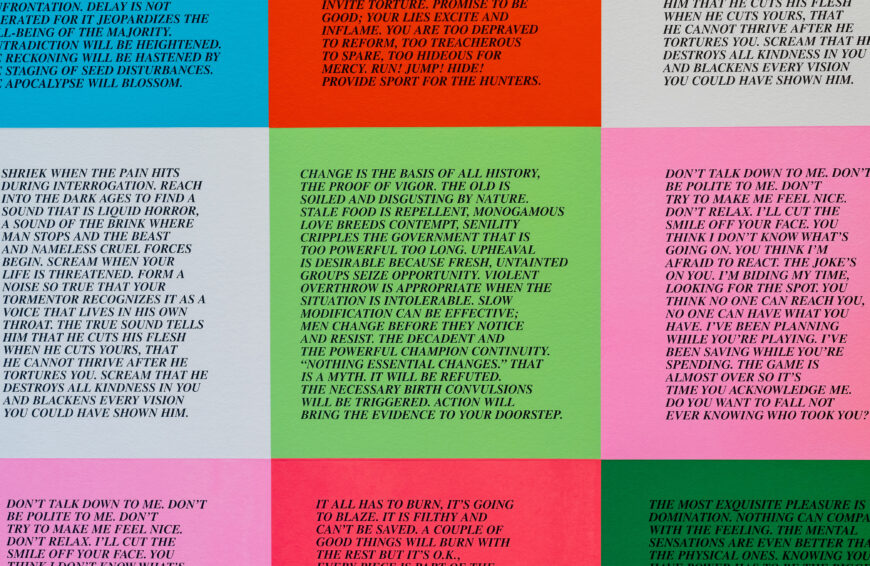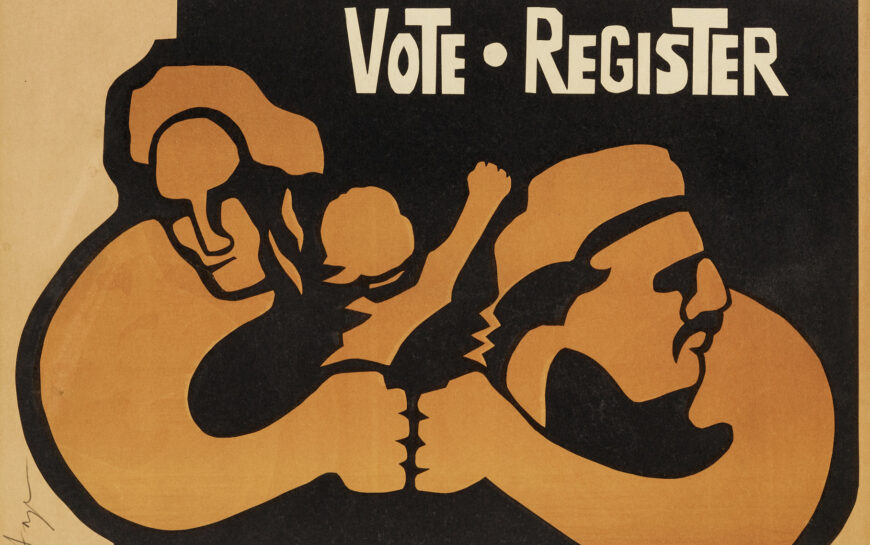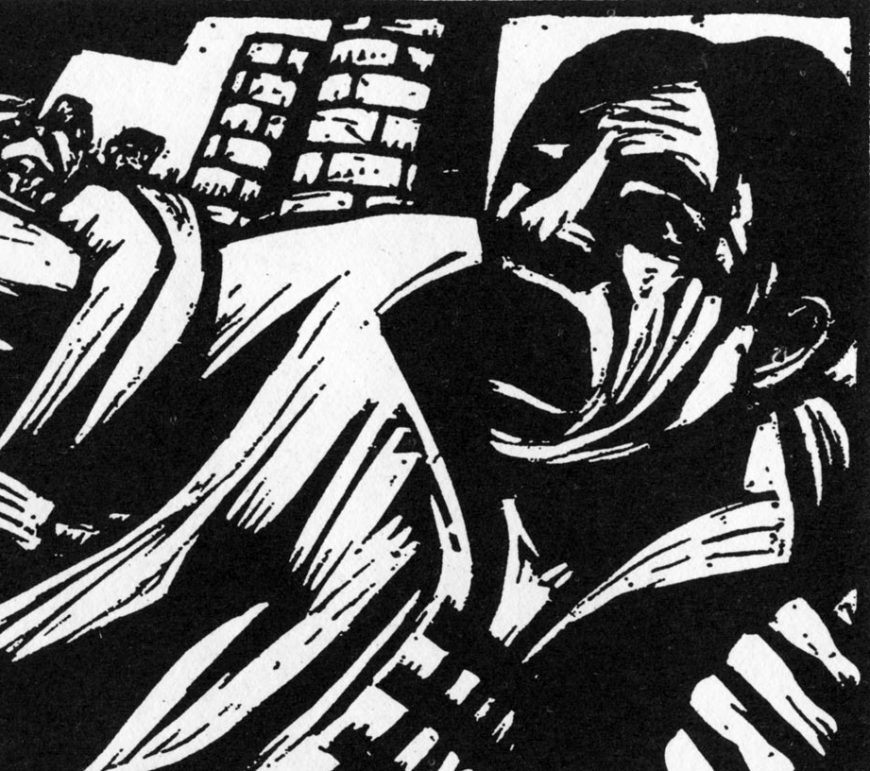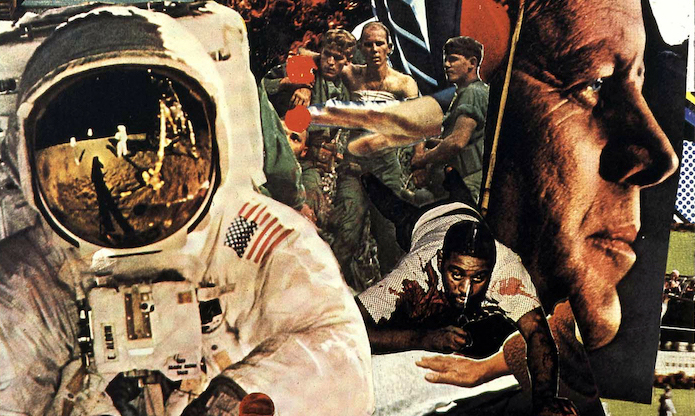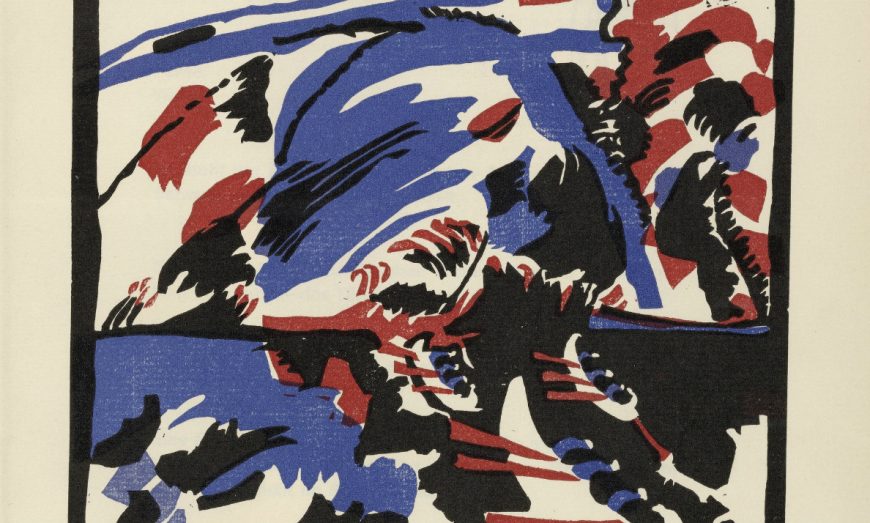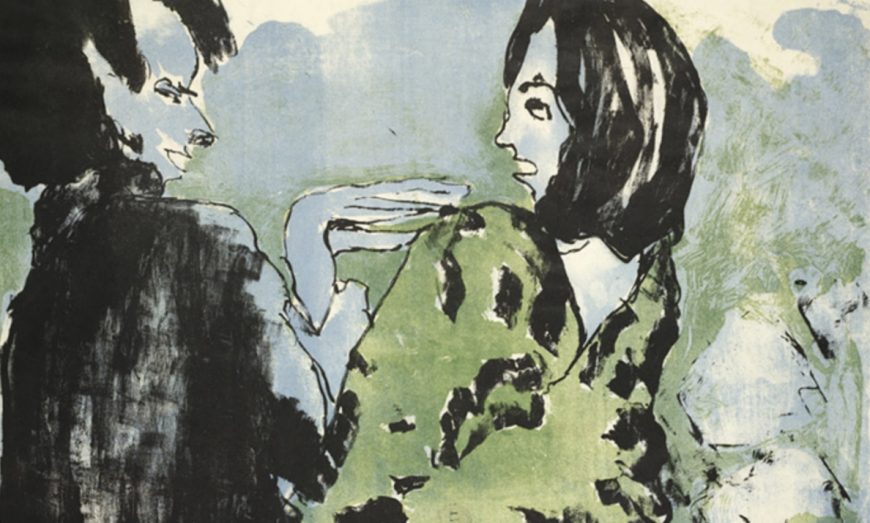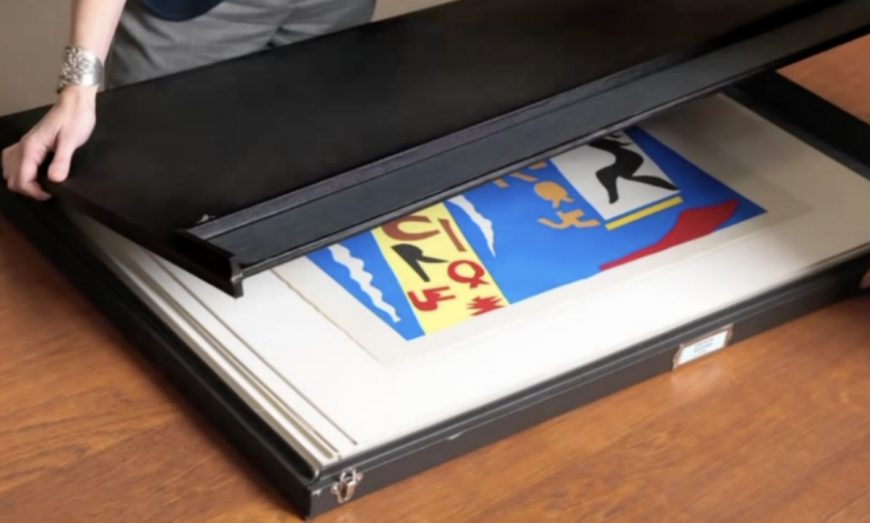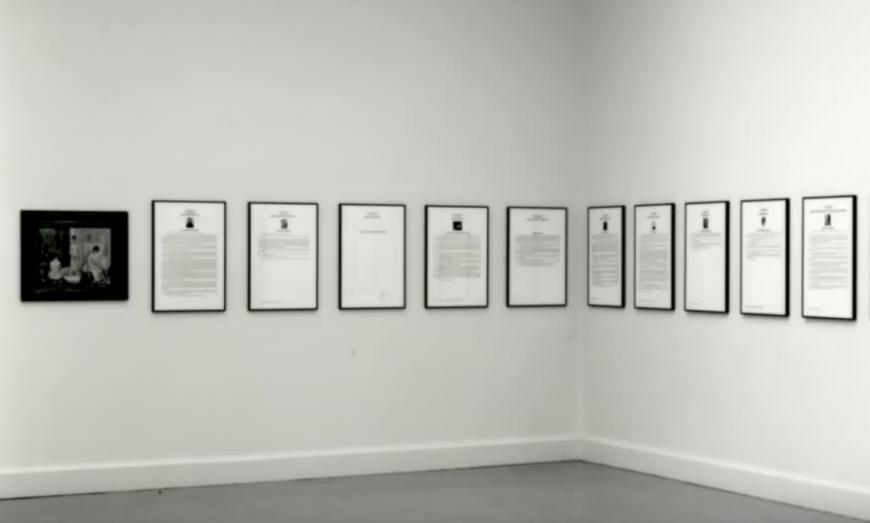Dimas’ screenprint elevates Puerto Rican activist Lolita Lebrón to iconic status.
Marcos Dimas, Lolita Lebrón: Puerto Rican Freedom Fighter, 1971, serigraph (El Museo del Barrio, New York) © Marcos Dimas. Speakers: Dr. Lee Sessions, Permanent Collections Associate Curator, El Museo del Barrio and Dr. Tamara Díaz Calcaño, University of Puerto Rico
0:00:05.0 Dr. Lee Sessions: We’re here at El Museo del Barrio looking at Lolita Lebrón: Puerto Rican Freedom Fighter, a print by Marcos Dimas.
0:00:13.0 Dr. Tamara Díaz Calcaño: Lolita Lebrón was one of four Puerto Rican nationalists present at the U.S. House of Representatives session on March 1st, 1954. They were part of the Puerto Rican Nationalist Party fighting for Puerto Rican independence. They visited one of these sessions of the U.S. House of Representatives and they opened fire mid-session with a rallying cry of, “¡Viva Puerto Rico libre!,” long live a free Puerto Rico. No one was wounded mortally. They were quickly arrested and they were tried as terrorists.
0:00:46.9 Dr. Lee Sessions: And at the time this poster was made she had been in prison for almost 15 years.
0:00:51.7 Dr. Tamara Díaz Calcaño: And we can see how Dimas here elevates her to iconic status representing her four times and she’s dressed in the colors of the Puerto Rican flag. Puerto Rico was invaded by the U.S. Army in 1898 during the Spanish-American War. Since then, it’s been territory of the United States. In 1952, a Commonwealth bill was ratified, defining the new relationship between Puerto Rico and the United States.
0:01:19.9 Dr. Lee Sessions: At the time that Dimas made this poster, he had a few years earlier returned back from serving in the Vietnam War. He went to the School of Visual Arts under the GI Bill and graduated just a year before, and this same year, he founded Taller Boricua, a printmaking collective based in East Harlem in which Dimas and a number of other Nuyorican artists, Puerto Ricans born and raised in New York, came together to imagine printmaking as a tool for political change, for building a sense of regional, of local identity among especially the youth of East Harlem.
0:01:56.7 Dr. Tamara Díaz Calcaño: Through the medium of silkscreen posters, they saw a very accessible way of educating the community, not only in Puerto Rican culture, in educating them in Taíno culture, but also educating them in the current political situation.
0:02:13.2 Dr. Lee Sessions: Printmaking, of course is a more accessible medium. It’s something that can be circulated more easily than paintings, for instance. Dimas might have been thinking about traditions of political popular printmaking in Puerto Rico, in Mexico, in California.
0:02:29.3 Dr. Tamara Díaz Calcaño: He also could have been thinking about the way Pedro Albizu Campos was portrayed in poster culture, not only in the U.S., but also in Puerto Rico. Albizu Campos was an important leader of the Puerto Rican independence movement. He was the leader of the Nationalist Party of Puerto Rico, of which Lebrón was a member. She herself saw Albizu Campos as a very inspiring person. And what we see in the 1970s is the representation of Albizu Campos as an icon of independence in the poster culture produced both in Puerto Rico and in the United States.
0:03:04.0 Dr. Tamara Díaz Calcaño: So we can see how Dimas is in a way elevating Lolita Lebrón to an iconic status, the same way Albizu Campos had been elevated to an iconic status in the independence movement.
0:03:18.4 Dr. Lee Sessions: There had been printmaking organizations in Puerto Rico since the 1950s. So, DIVEDCO was a government organization that employed artists to create posters that spread awareness about current events, about health issues and Marcos Dimas might have been thinking about these histories of government-sponsored printmaking in Puerto Rico.
0:03:40.2 Dr. Tamara Díaz Calcaño: Even though he’s working in New York and in touch with the community in East Harlem, he’s still very much thinking about the poster culture and the production that is happening in Puerto Rico.
0:03:51.7 Dr. Lee Sessions: There are also printmaking collectives being founded in California. Mission Gráfica was also an organization that was based around and of using prints to create a local identity and a specifically Chicano identity. So you can see Dimas drawing on a lot of art movements of the period, obviously referencing pop art and Andy Warhol and the kind of repetition of the image.
0:04:15.3 Dr. Tamara Díaz Calcaño: The colors are also very much 1970s, they’re very psychedelic. And even though he’s referencing the Puerto Rican flag, the quality of the red, for example, feels very bright and very 70s, I think.
0:04:27.7 Dr. Lee Sessions: And that intensity of color is enhanced by the fact that they’re printed in flat fields of color that both flatten the image and make it feel very immediate and very accessible.
0:04:41.5 Dr. Tamara Díaz Calcaño: The very delicate black outlines that define her face, her hair, also complement the dramatic typography that is almost futuristic in a way. Lebrón would remain in prison until 1979 when she and her four colleagues would receive a presidential pardon from Jimmy Carter, but she would continue on to become an important figure in the independence movement in Puerto Rico. She would continue her career as an activist to the later years of her life when we still see her being part of important protests. And we can see in this print from 1971, the beginning, perhaps, of Lolita as an iconic political figure in Puerto Rico and beyond.
[music]


